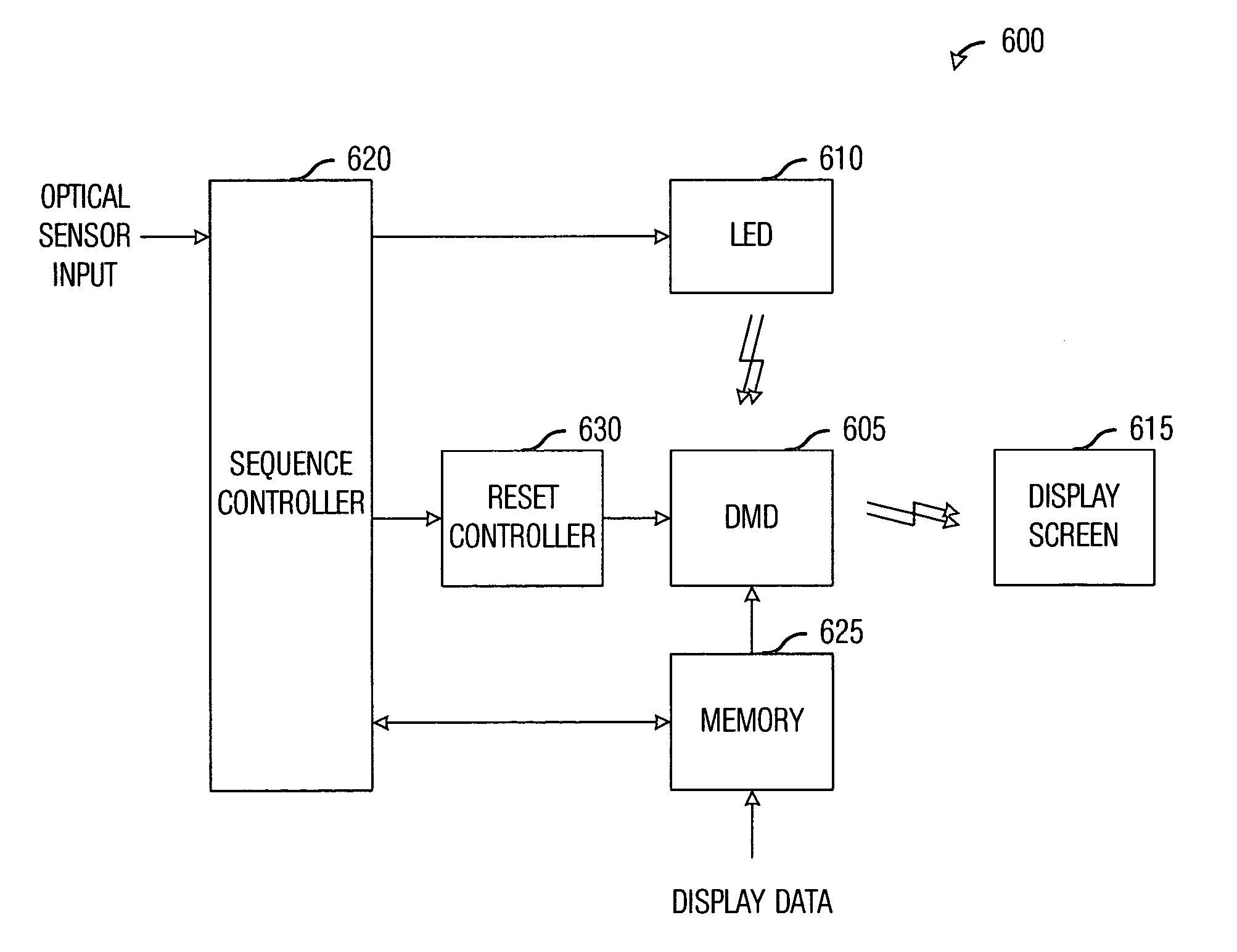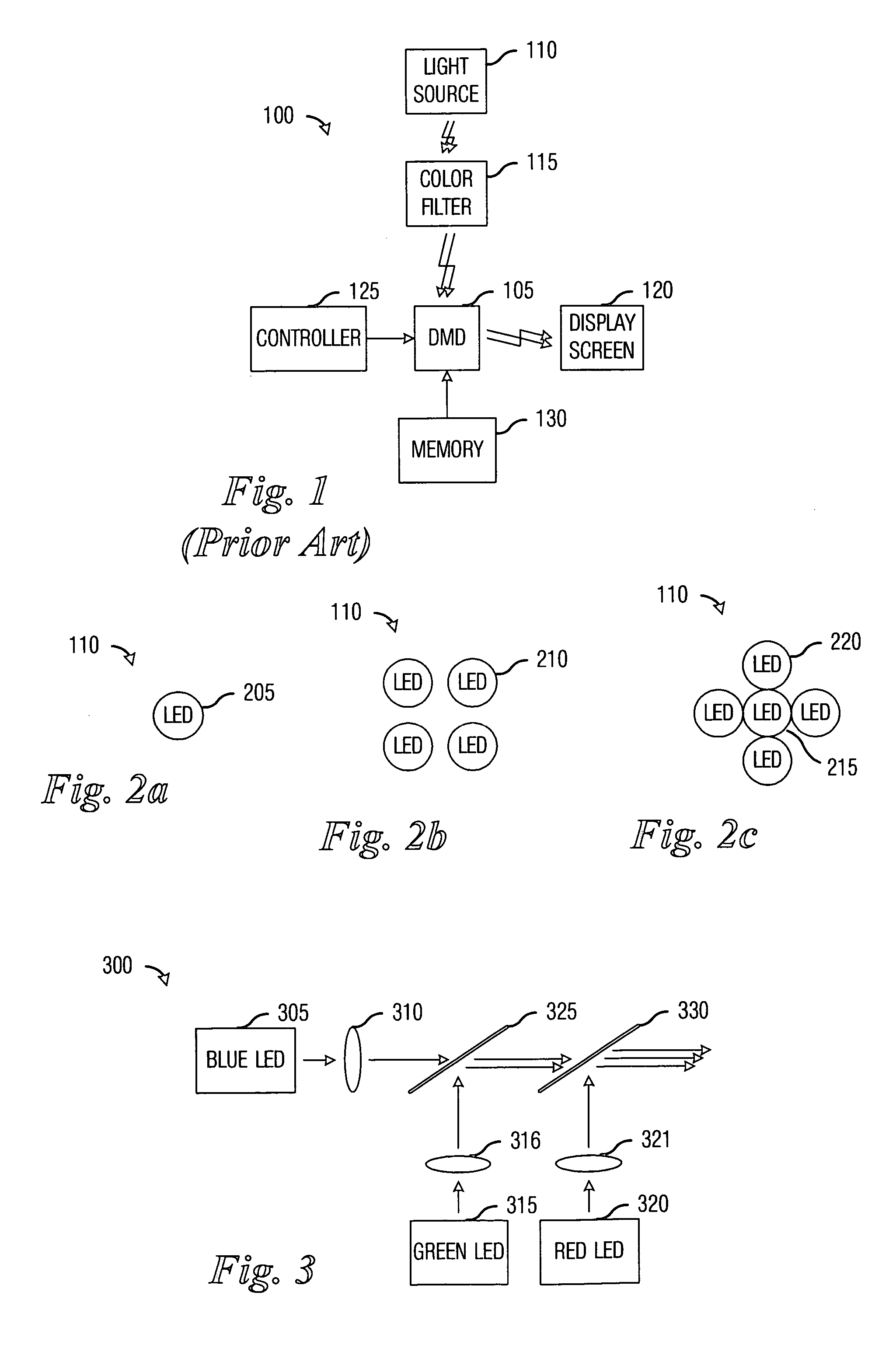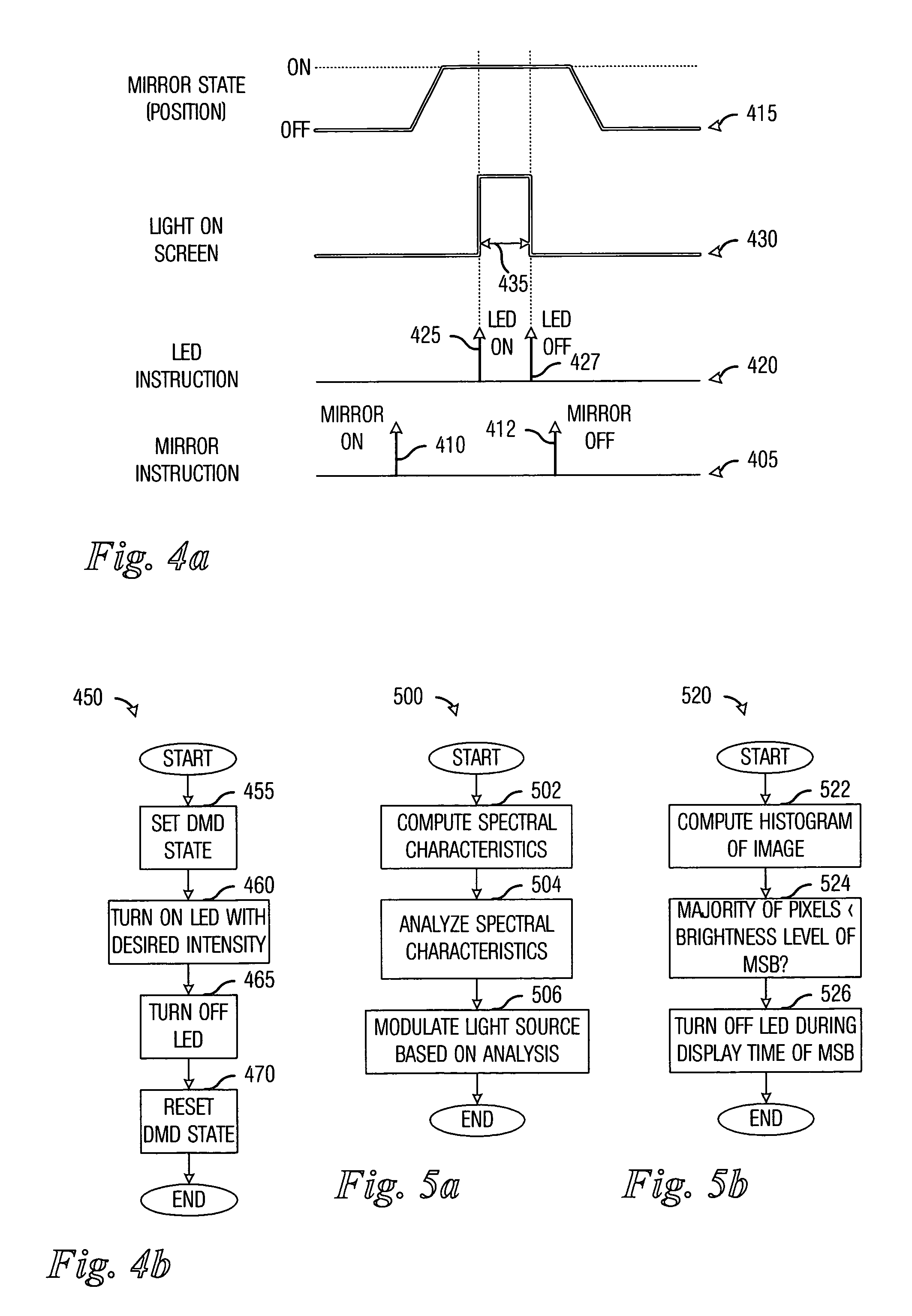Light-emitting diode (LED) illumination in display systems using spatial light modulators (SLM)
a technology of spatial light modulator and light-emitting diodes, which is applied in the field of display system system and method, can solve the problems of increasing the complexity increasing the cost and reliability inefficient use of electrical power, so as to improve the dynamic range (bit-depth) of the display system, improve image quality, and improve the performance of the display system.
- Summary
- Abstract
- Description
- Claims
- Application Information
AI Technical Summary
Benefits of technology
Problems solved by technology
Method used
Image
Examples
Embodiment Construction
[0020] The making and using of the presently preferred embodiments are discussed in detail below. It should be appreciated, however, that the present invention provides many applicable inventive concepts that can be embodied in a wide variety of specific contexts. The specific embodiments discussed are merely illustrative of specific ways to make and use the invention, and do not limit the scope of the invention.
[0021] The present invention will be described with respect to preferred embodiments in a specific context, namely an SLM display system making use of digital micromirror devices as light modulators. The invention may also be applied, however, to other SLM display systems, such as those making use of LCD, LCoS, deformable mirrors, and so forth.
[0022] With reference now to FIG. 1, there is shown a diagram of a prior art display system 100. The display system 100 features a digital micromirror device (DMD) 105 as a light modulator. The DMD 105 comprises an array of positiona...
PUM
 Login to View More
Login to View More Abstract
Description
Claims
Application Information
 Login to View More
Login to View More - R&D
- Intellectual Property
- Life Sciences
- Materials
- Tech Scout
- Unparalleled Data Quality
- Higher Quality Content
- 60% Fewer Hallucinations
Browse by: Latest US Patents, China's latest patents, Technical Efficacy Thesaurus, Application Domain, Technology Topic, Popular Technical Reports.
© 2025 PatSnap. All rights reserved.Legal|Privacy policy|Modern Slavery Act Transparency Statement|Sitemap|About US| Contact US: help@patsnap.com



